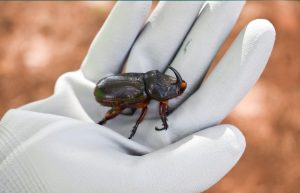The Navy’s new proposal to expand bombing and gunnery practice at Ka’ula Island seems insupportable, both morally and as a matter of federal law.
Here is the Draft Environmental Assessment that includes the Ka’ula impacts.
It expands potential military operations at the tiny island to 55 per year, more than one a week. That is on an island that is a designated state seabird sanctuary (established 1978) and contains endangered and state and federally protected plants and birds, and marine protected species in the nearshore waters.
Ka’ula is one of the four islands of of Kaua’i County (Kaua’i, Ni’ihau, Lehua and Ka’ula). The designated weaponry impact area is 11 acres at the southern end of the 130-acre island.
Ka’ula is well known in Hawaiian history and chant. The bird life there was once so dense that the island was used as an example of overcrowding.
(Hā’iki Ka’ula I ka ho’okē a na manu. There is no room on Ka’ula, for the birds are crowding. –from ‘Ōlelo No’eau by Mary Pukui.)
It has been bombed since 1952.
The Navy over the years has steadfastly resisted calls to end its bombing, from fishermen, from U.S. Congress members, the U.S. Secretary of the Interior, from the Kaua’i County Board of Supervisors (1961) and Kaua’i County Council (1975), and from federal fisheries and wildlife officials.
And from the State of Hawai’i, whose attorney general in 1978 asserted the island belongs to the state. That conflict over ownership was not resolved, and state officials now say the ownership is contested but no recent efforts to assert state control have been reported.
Weapon strikes are proposed to be limited to the designated 11-acre “impact area.” But that has not always been the case: 1) A 1978 fisherman’s report saw bombs exploding both in the water and among seabirds; 2) The Draft EA says there are likely live munitions on the island outside the impact area; 3) On one occasion in 1965, bombs intended for Ka’ula landed on Ni’ihau, more than 20 miles away.
The new proposal says only inert weapons will be deployed in the future.
The birds and seals of Ka’ula, as well as passing whales and dolphins, are protected by the US. Migratory Bird Treaty Act, the U.S. Marine Mammal Protection Act as well as the island’s designation as a State of Hawai’i bird refuge.
The Draft EA proposes that the impact of bombing, gunnery exercises, helicopter landings and other activities are acceptable. There are Hawaiian cultural sites, including stone temples and habitation sites, but they are outside the designated impact zones and so, “impacts on cultural resources would be less than significant.” (Page 3-86)
The Navy’s legal justification for harming wildlife is contained in a federal law, the 2003 National Defense Authorization Act. It “gave the Secretary of the Interior authority to prescribe regulations to exempt the Armed Forces from the incidental taking of migratory birds during authorized military readiness activities,” the Draft EA says.
Based on that, the Draft EA argues that targeting a wildlife refuge and protected bird nesting site with bombs, shells and landing helicopters would result in takes that are merely incidental. The Draft EA says (Page 3-30) that the Department of Defense has a responsibility to minimize and mitigate its impacts. But it seems at least problematic to argue incidental and minimized when the wildlife refuge is the target.
The Draft EA argues that health, safety and noise are not issues because there are “no human sensitive receptors” nearby. This, of course, does not address the impacts on the health, safety or hearing of protected sooty terns, threatened black-footed albatross or endangered Hawaiian monk seals.
The Navy asserts that it owns Ka’ula. That position has long been challenged by Hawai’i.
The island was set aside by the Territory of Hawaii for use by the U.S. Department of Commerce under the U.S. Lighthouse Service in 1924 as a lighthouse reserve. Commerce conveyed it to the Coast Guard, which operated a navigational light there until 1947, when it was permanently shut down.
Instead of returning the island to the territory, the Coast Guard in 1952 authorized the Navy to conduct bombing exercises, apparently without the authorization of territory.
Kaua’i County residents began regularly protesting the activity within a few years, at the behest of anglers who said the bombing was impacting birds, which the fishermen depended on to locate schooling fish.
U.S. Rep. Patsy Mink in the early 1960s urged the island’s inclusion in the Hawaiian Islands National Wildlife Refuge, and the Department of Interior started but failed to complete that inclusion.
The Navy rejected the Hawaiian ownership arguments, and in 1965, U.S. Rep. Spark Matsunaga reported that the Coast Guard had transferred its authority over the island to the Navy.
The comment period for this Draft EA is ending. Comments go to pmrf-lbt-ea-comments@us.navy.mil.
© Jan TenBruggencate 2024








